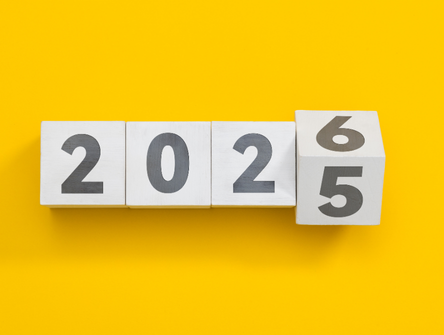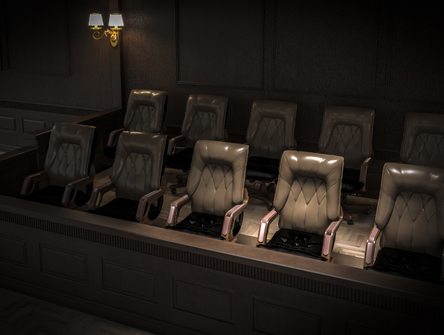Senator Lynn Beyak was already a controversial figure after her peculiar (and widely condemned) public defence of residential schools back in March. Her follow-up statement in September suggested she’d forgotten the first rule of political communications: When you’re in a hole, stop digging.
“Trade your status card for a Canadian citizenship, with a fair and negotiated payout to each Indigenous man, woman and child in Canada, to settle all the outstanding land claims and treaties,” Beyak wrote on her Senate website. “None of us are leaving, so let's stop the guilt and blame and find a way to live together and share.”
That a Canadian senator apparently believed status Indigenous Canadians are not citizens of Canada isn’t all that surprising – not when you remember that the law defining the First Nations-Crown relationship is 141 years old and was crafted not to support autonomous Indigenous communities, but to wipe out their culture.
No one loves the Indian Act, but no one quite seems to know what to do with it. The law was designed to absorb Indigenous People into broader Canadian society over time – first by defining who qualified as an ‘Indian’ (through a registry of ‘status Indians’) and then by establishing the on-reserve band system that allows the Crown to control their movement, their economic activity and their legal rights.
The authors of the Indian Act described its purpose in terms of containment and transformation: Indigenous Peoples had rights promised by the Crown that predated Canada’s existence, and the Act was designed to administer those rights in a way that would convince ‘Indians’ to surrender them in favour of ‘enfranchisement’ – becoming Canadians. To that end, the Act enabled the residential school system, designed to cut Indigenous children off from their cultures and speed their assimilation. "The great aim of our legislation,” said John A. Macdonald in 1887, “has been to do away with the tribal system and assimilate the Indian people in all respects with the other inhabitants of the Dominion as speedily as they are fit to change.”
The Indian Act is a colonial law, imposed on what were seen as conquered peoples – a weird atavism of 19th-century legal thinking, surviving into the 21st.
“If the residential schools were designed to ‘kill the Indian in the child,’ as the phrase went, the Indian Act was designed to break apart pre-existing First Nations governance and replace it with a fiduciary relationship with the Crown,” says Merle Alexander, a partner at Gowling WLG in Vancouver and a member of the Kitasoo Xai'xais First Nation. “It’s the reason self-government is handcuffed in Canada.”
The Indian Act has been amended over the decades to blunt some of its more egregious effects – to eliminate some of its misogynistic limits on Indian status, for example, and to give band councils more control over status. But the core function of the Act – to maintain a sui generis system of federal municipalities to govern status Indigenous Canadians that depends upon the federal government both for authority and funding – hasn’t changed. The federal minister is the ultimate power when it comes to the use of non-self-governing reserve lands, even to the extent of directing where roads can be built. The minister can void the results of band elections and fire chiefs and council members for cause. In other levels of government in Canada, those who govern are accountable to their citizens. Under the Indian Act, that line of accountability also moves in the opposite direction – back to the minister of Indigenous Affairs.
“The Indian Act is rooted in a 19th-century view of the inherent superiority of Western civilization,” says Christopher Devlin, a treaty law specialist with the DGW law corporation in Victoria and a member-at-large of the CBA’s Aboriginal Law Section. “That attitude infects the law from top to bottom.”
The government of Prime Minister Justin Trudeau isn’t the first to promise root-and-branch reform of the Crown’s relationship with Indigenous Canadians during an election campaign, and it probably won’t be the last. Still, it’s been busy. It established a ministerial working group to look at “de-colonizing” Canadian law to reflect the nation-to-nation relationship. It lifted a 2-per-cent cap on federal funding for Indigenous programs and struck a deal with the Assembly of First Nations to review all federal Indigenous funding arrangements. In July, the Department of Justice released a list of ten “principles” guiding the government’s relationship with Indigenous Canadians going forward – chief among them recognition that the right to self-government is “inherent.”
And in August, Trudeau followed through on a recommendation that dates back to the 1996 Report of the Royal Commission on Aboriginal Peoples by splitting Indigenous and Northern Affairs into two separate departments – one (Indigenous Services) responsible for service delivery in non-self-governing Indigenous communities, and the other (Crown-Indigenous Relations and Northern Affairs) responsible for running the Indian Act.
These are administrative changes; the Indian Act is law. Many observers say that while the Act remains in place, the relationship can’t evolve beyond that 19th-century model. But the Indian Act supplies the legal scaffolding that supports hundreds of communities across the country. “It provides the structure for local community governance and community life,” David Newhouse, director of the Chanie Wenjack School for Indigenous Studies at Trent University, wrote in a recent paper published in Policy Options. “Reforming the Act in one fell swoop, or repealing it, would be enormously disruptive to First Nations.” Abolishing the Indian Act with a pen stroke isn’t really an option – even if you were to replace it with another law, and maybe not even then.
“The problem is the Indian Act is deeply interwoven into the fabric of First Nations over seven generations,” says Alexander. “It’s embedded in almost every aspect of life on a reserve, and has had a terrible effect on how First Nations people see themselves.
It’s not just about assimilation. It’s oppression.
“So you can’t just eliminate it, no matter how much it is hated. It’s like a person with a knife wound, waiting for the paramedics. If you pull the knife out too soon, he’s going to bleed to death. Like doctors, we have a fiduciary relationship with the patient.”
It’s worth remembering that the federal government’s only attempt to scrap the Indian Act in one go – proposed in a 1969 White Paper by the government of Prime Minister Pierre Trudeau – was met with widespread and ferocious opposition by Indigenous Canadians themselves. The paper called for, among other things, the abolition of the Indian Act and all treaties, incorporating First Nations under the provincial sphere and imposing mainstream Canadian land use laws and regulations on Indigenous Canadians. Where Trudeau Sr. saw the long-overdue axing of a paternalistic and racist law, Indigenous Canadians saw an attack on their rights and an attempt to speed up the work of assimilation the Indian Act started.
A paper written in response by the Indian Chiefs of Alberta called ‘Citizens Plus’ (the 1970 Red Paper) called for a gradual devolution of powers to First Nations as circumstances allowed: “We believe there should be a commitment from the government that, as time passes and Indians choose, we should be given those responsibilities we feel we are capable of taking on.”
“There really isn’t any consensus among Indigenous people about what a post-Indian Act legal landscape would look like,” says Val Napoleon, the Law Foundation Professor of Aboriginal Justice and Governance at the University of Victoria and a member of the Saulteau First Nations.
These days, many people working in the field of Indigenous law argue that if the Indian Act can’t die, it must dwindle away – through a process of delivering its powers and responsibilities to Indigenous communities on a case-by-case basis. One of the Indian Act’s major sins was to treat all Indigenous communities as if they were cut from the same cloth, with the same cultures and pre-contact legal systems. Its replacement can’t be another law that does the same thing.
This process – of taking it apart piece by piece – has been going on for awhile now. Several pieces of federal legislation allow individual First Nations to remove themselves from the Act’s authority in specific policy zones. “There is no cookie-cutter, one-size-fits-all solution to this,” says Devlin. “But the very idea that there is no single solution to the problem is the sort of thing that sends the bureaucracy into conniptions.
“There’s no point in trying to impose a single legal framework on every single Indigenous community. That’s what we have now. There are lots of legislative frameworks out there that First Nations can adhere to – and once they do, the Indian Act doesn’t apply to them in that sphere.”
He cites an example: the First Nations Commercial and Industrial Development Act, which allows First Nations to adopt regulations for commercial land developments that are compatible with provincial regulations. The idea is to make it easier for Indigenous communities to secure financing for on-reserve projects like shopping centres.
In 1999, the federal government passed the First Nations Land Management Act, based on a framework negotiated between Ottawa and a group of First Nations leaders. The FNLM allows First Nations to draft their own land codes outside the Indian Act. To join the FNLM system, a First Nation passes a resolution to that effect and drafts its land code, which has to be ratified by the First Nation’s membership. Once the federal minister officially transfers land management authority, the First Nation gets out from under the thumb of 32 sections of the Indian Act and can make laws dealing with land use and environmental protection without seeking the federal government’s permission.
Laws like the FNLM do not offer self-government – in a sense, that’s why they exist. Negotiating self-government can take years, even decades, while joining the FNLM regime typically takes just two years. As of last year, about 58 of 615 First Nations had joined the FNLM regime, with another 60 or so in the pipeline working on land codes of their own. There are almost twice as many First Nations using the FNLM regime as there are First Nations that have completed self-government or land claims deals over the past 43 years. Outside studies of the FNLM report that participating First Nations have significantly increased the speed of land transaction processing, and have boosted outside investment, band revenues and employment as a result.
Laws like the FNLM that operate outside of the Indian Act offer First Nations what Devlin calls an “à la carte” approach to legal reform.
“It’s driven by First Nations’ interests and needs, not by the Crown. First Nations are given the authority to pick and choose for themselves which aspects of governance they want to take on.”
And this piecemeal approach to escaping the Indian Act isn’t limited to land use. Since 2013, the First Nations Health Authority has been administering health services for Indigenous Canadians in British Columbia, from primary care to mental health services. Back in 1980, the Spallumcheen First Nation in B.C. – alarmed by the fact that provincial child welfare authorities had removed 150 children from their community – staged a massive demonstration in downtown Vancouver that led to the passage of an Indian Act bylaw giving the band exclusive jurisdiction over all child custody cases involving children from the community, effectively making the chief and council the legal guardians of children taken into care.
The Spallumcheen case is particularly intriguing in that it points to a tool within the Indian Act itself for dismantling the law’s authority. Under the Act, band councils have had the power to pass by laws since the late 1800s – but because the ‘disallowance power’ (repealed in 2014) retained the federal minister’s right to quash or limit any band bylaws that clashed with provincial or federal jurisdiction, the bylaw power has been mostly limited to purely street-level matters, such as garbage disposal or wildlife management.
Spallumcheen’s bylaw went further, taking authority away from the provincial government and vesting it in the band. And while the federal government hasn’t approved similar bylaws since (a 1996 departmental manual insisted that the by law power doesn’t give First Nations the ability to take over social services), it also hasn’t moved to disallow the Spallumcheen by law.
And that, says Naiomi Metallic, suggests First Nations have far more power to legislate within the Indian Act than many of them realize.
In a recent paper, Metallic – Chancellor's Chair in Aboriginal Law and Policy at Dalhousie University’s Schulich School of Law, and a member of the Listuguj Mi'gmaq First Nation in Quebec – argued that the bylaw power could act as a stop-gap to give First Nations more control over their affairs on the way to full self-government.
“If … the powers over ‘health of residents on reserve,’ ‘observance of law and order’ and ‘prevention of disorderly conduct and nuisances’ are capable of authorizing jurisdiction over child welfare,” she writes, “then it would seem that such provisions are equally capable of authorizing jurisdiction over most, if not all, of the other subjects we commonly recognize as being essential services, such as public health,social welfare, education, child care, policing, and emergency services.”
Over at UVic, Napoleon helped to establish the Indigenous Law Unit, which works to research and reconstruct pre-contact Indigenous legal structures with the goal of implementing them at the local level. The unit’s current projects include work on resurrecting Indigenous law on watershed use, child welfare, civil procedure and marine management, among other topics. She’s also working on the establishment of a degree-granting program in Indigenous law; the aim is to have the program in place by next year.
“Once those Indigenous legal orders are rebuilt, the Indian Act becomes largely redundant,” she says. “That means you’ll see different legal arrangements in different parts of the country, arrangements that are different in treaty nations than in other communities.
“It’s not going to be a level field. Not every community is going to want the same things. But until we do some work on rebuilding those Indigenous legal traditions, we’re not really going to know what that post-Indian Act landscape is going to look like.”
It might sound like a legal patchwork to some but Napoleon points out that Canada already has copious experience in dealing with different legal orders operating side-by-side – with Quebec’s unique Civil Code, for an example.
Legal authority isn’t much use without the capacity funds to back it up. Douglas Sanderson, an associate professor of law at the University of Toronto, recently published a paper arguing for a complete revamp of the fiscal relationship between First Nations and provincial and federal governments. Provinces collect a lot of revenue from First Nations’ land, he says – nearly $1-billion dollars in stumpage fees from logging in Ontario alone. By giving First Nations the power to collect that revenue on their own traditional territories, he argues, the Crown would advance the project of self-government for a lot of Indigenous communities – and strengthen their democracies in the process.
“A chief’s political constituency is the federal minister and the federal government, not the people living in the community – because it’s the Crown that provides the funding that keeps the community functioning,” he says, adding that any arrangement turning taxation power over to First Nations would need to provide for transfers to provincial governments.
“The reality is that removing First Nations revenue from the mix would lead to massive budget holes for provinces. This isn’t something the Constitution covers.”
None of these changes to First Nations governance directly affect non-status Indigenous Canadians – which is where last year’s Supreme Court decision in the case of Daniels v. Canada comes in. Daniels established that Métis and non-status Indigenous Canadians are ‘Indians’ for the purposes of section 91(24) of the Constitution Act, the section giving the federal government exclusive jurisdiction in Indigenous affairs. By blurring the line between ‘status’ and ‘non-status’ Indigenous Canadians, Daniels v. Canada, says Thomas Isaac, a partner at Cassels Brock in Vancouver, raised some provocative questions about the need for a status ‘registry’ and the relationship between Ottawa, the provinces and Indigenous Canada.
“Daniels is going to turn out to be one of the most important rulings in the history of the Supreme Court of Canada,” says Isaac, who recently wrote a paper on the topic with his colleague Arend Hoekstra. “The real story of Daniels is that everybody is included under 91(24). It challenges the concept that the federal government has sole responsibility for ‘registered’ Indians. How do you justify such a concept in 2017?”
If there’s no real distinction in law between‘status Indians’ covered under section 35 of the Constitution and Indigenous Canadians, Isaac says, then the federal Crown’s obligation to pursue ‘reconciliation’ with Indigenous Canadians covers both First Nations and individuals. “’Reconciliation’ for the purposes of section 91(24),” he and Hoekstra write, “appears to be focused on the federal Crown remedying historic wrongs that it has committed against Indigenous peoples, including individuals, whether or not they are section 35 Aboriginal peoples.”
“And here’s where things get really interesting,” Isaac says. “The federal government cannot afford to take on services for everyone covered under 91(24). Hit the fast-forward button and you see where this is going – the feds have to get out of the way. They only have so much money to go around. They can just vacate the space and leave it to the provinces.”
Alexander is skeptical. “The provinces collectively can’t get their act together on much of anything,” he says. “It might make more sense if the federal government negotiated a bilateral with one province, a kind of pilot project. It would still be a project that would take more than five years.”
He has a point : Political negotiations between orders of government about dividing authority and resources have a high failure rate (as a glance at Canada’s experiences with constitutional reform will tell you). At the very least, such negotiations take a long, long time – longer than the lives of most federal governments. That explains why so many people working towards getting Indigenous Canada out from under the Indian Act are pinning their hopes on incremental change, rather than sweeping changes to the Crown-Indigenous relationship based on a single bedrock principle enshrined in the United Nations Declaration on the Rights of Indigenous Peoples that Canada endorsed in 2010: that Indigenous Peoples have the right to self-determination.
But for many people working in the field of Indigenous rights, the ‘piecemeal’ approach to self-determination is a mortal threat to self-determination itself – because it overlooks (or ignores) the right to self-government. Laws like the First Nations Land Management Act, says Russell Diabo, a policy adviser to the Algonquin Nation Secretariat, amount to the Crown continuing “to set the parameters for how First Nations people are to live on their land, even once they opt out of the Indian Act.
“They have to stop ignoring Indigenous jurisdiction,” he says.
“I don’t believe in a piecemeal approach. It hasn’t worked in the past. It ignores the fact that self-government is an inherent right of Indigenous Peoples. It treats First Nations as basically federal municipalities, when in my view the only proper approach is high-level talks at the federal level.
“It treats s. 35 as not offering the right of self-determination in the sense of international law. It says we have to harmonize our laws with federal and provincial ones. That’s the incremental approach.
“It’s fraudulent for the federal government to call this a decolonization effort. It’s a re-colonization effort.”



